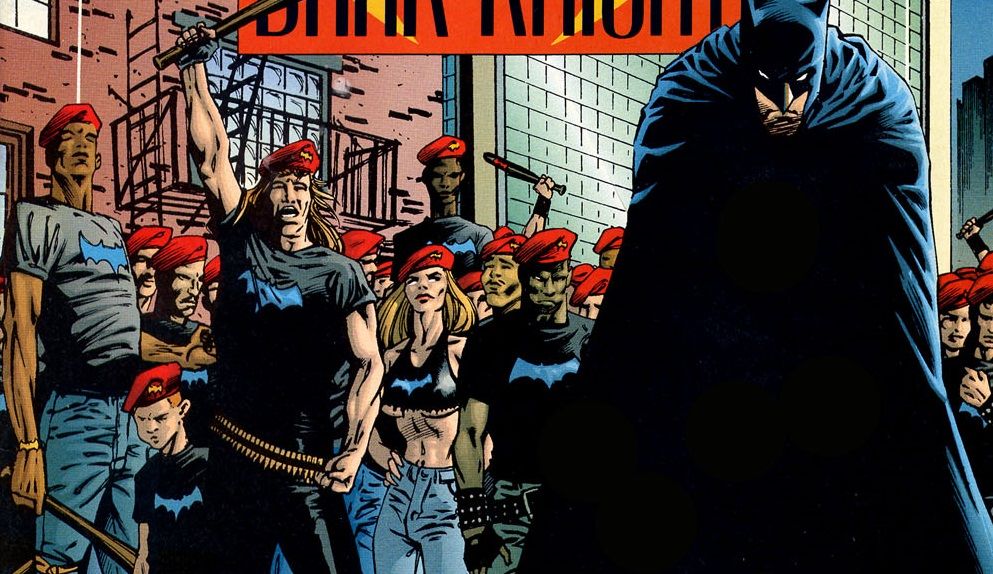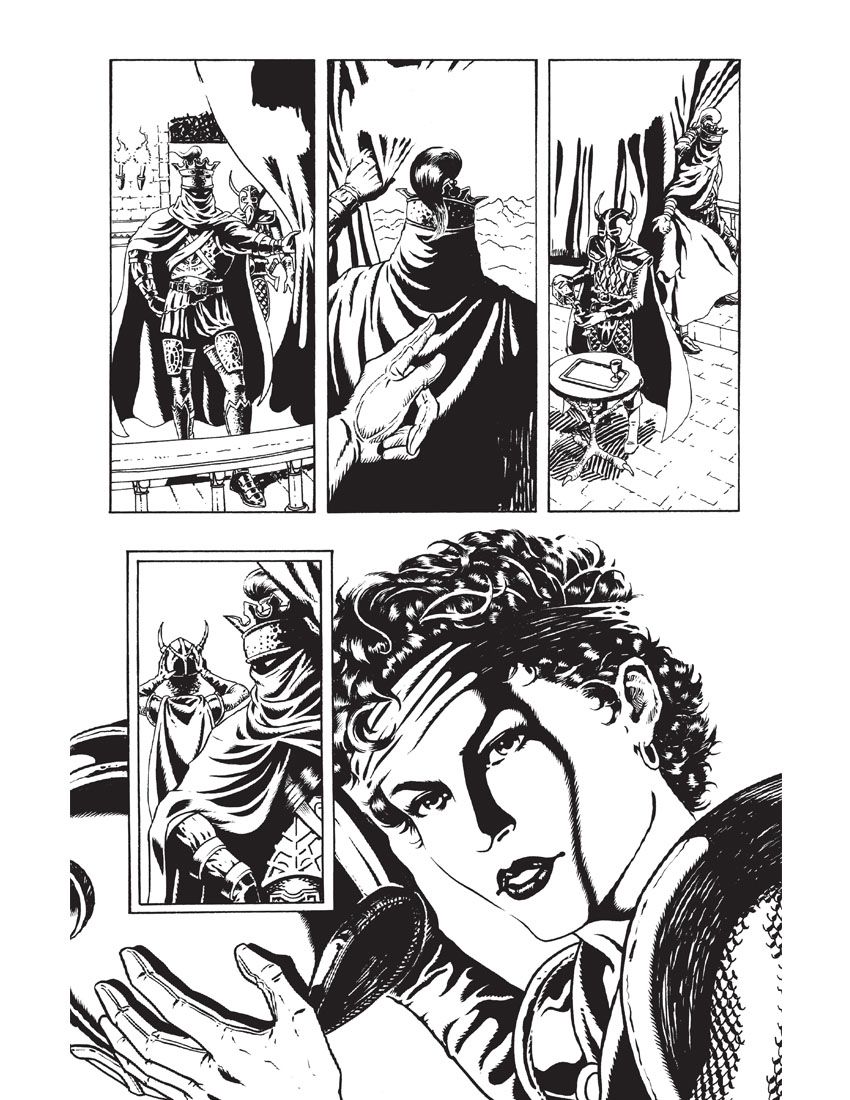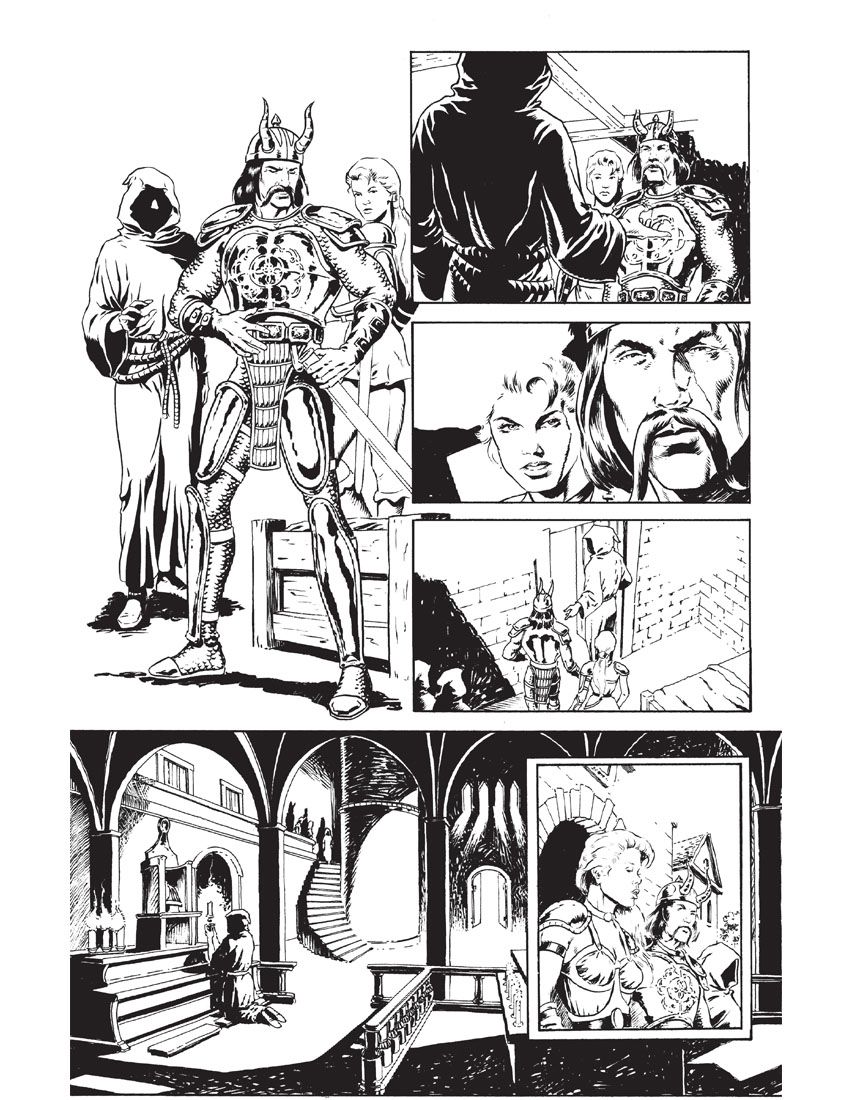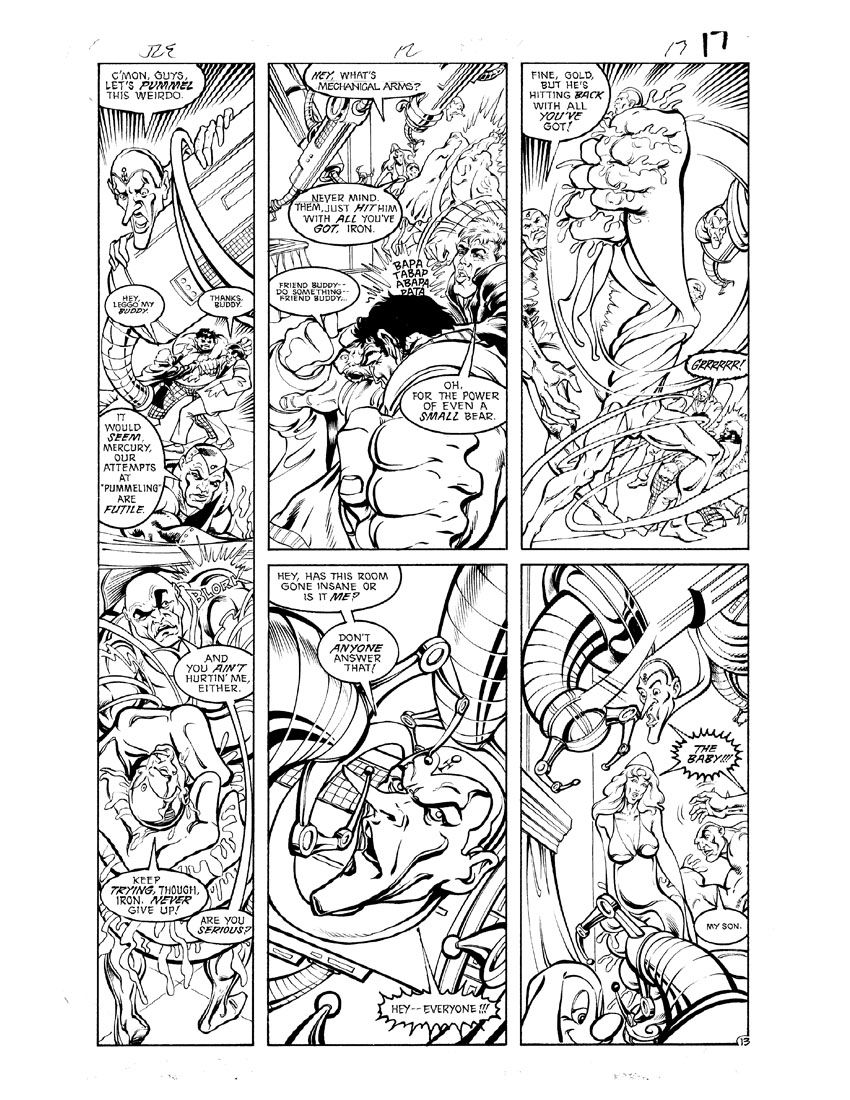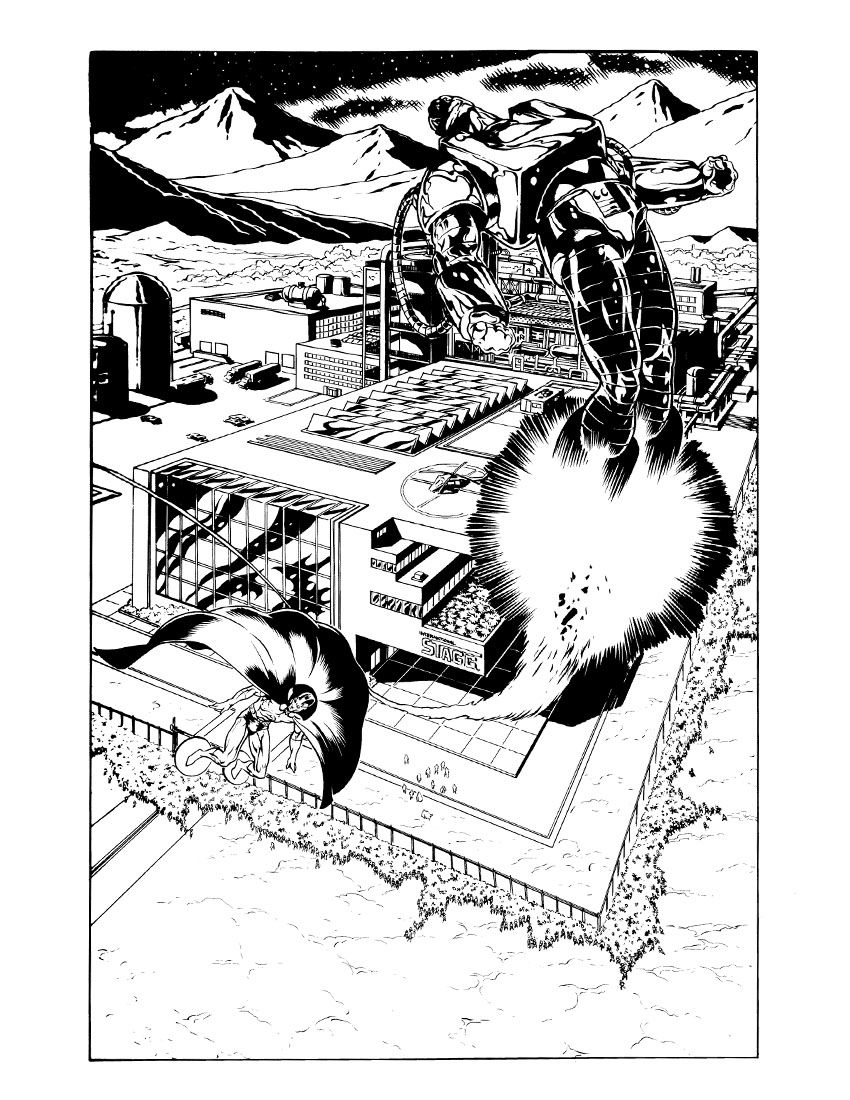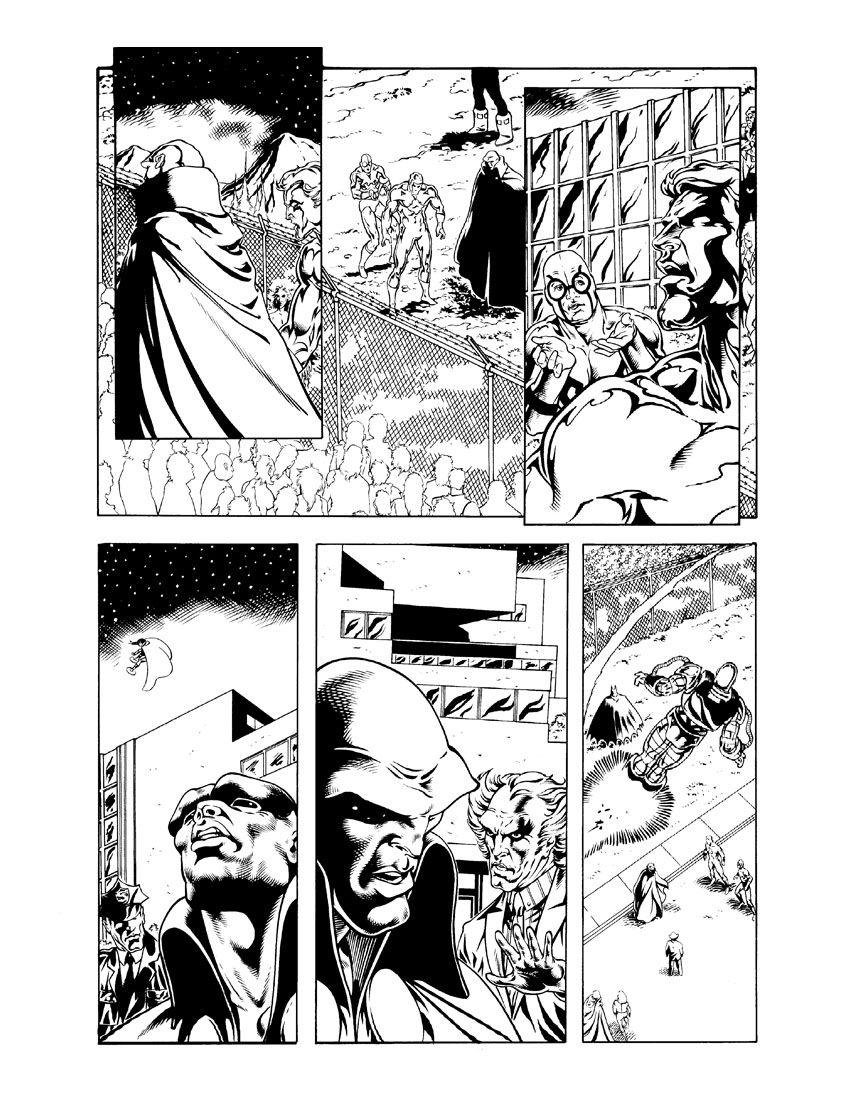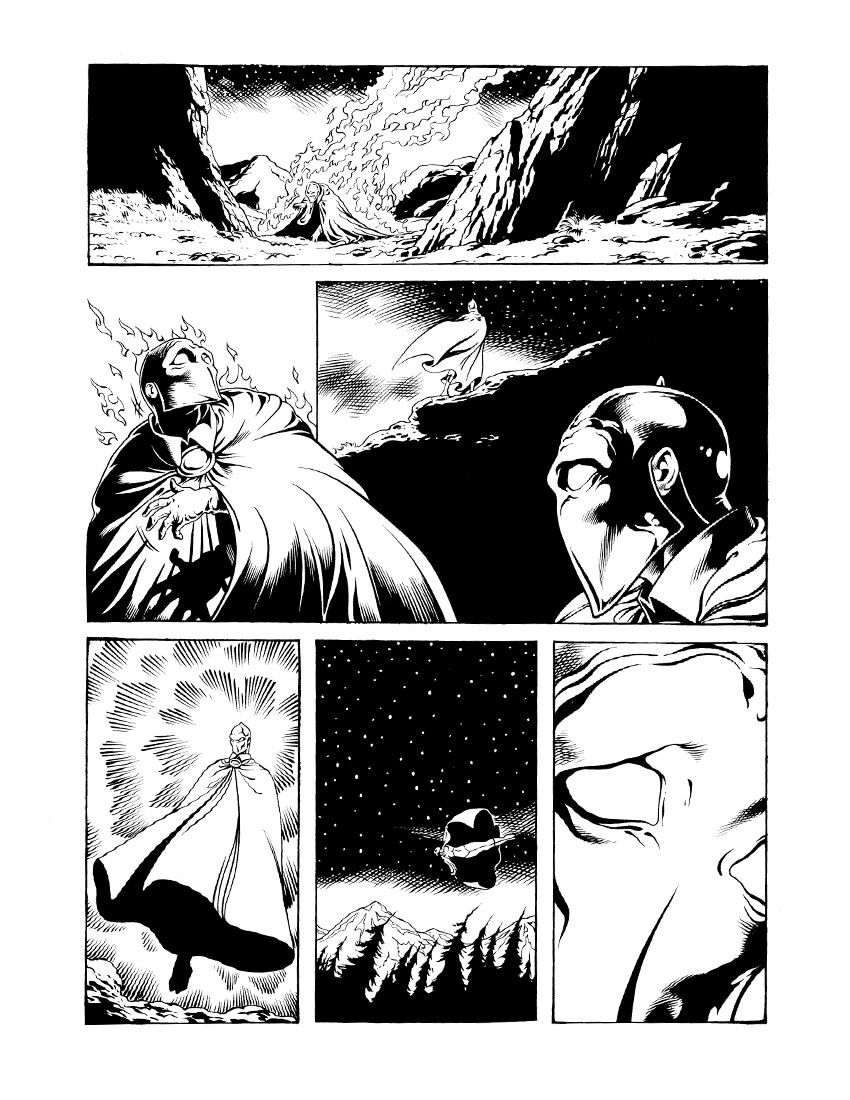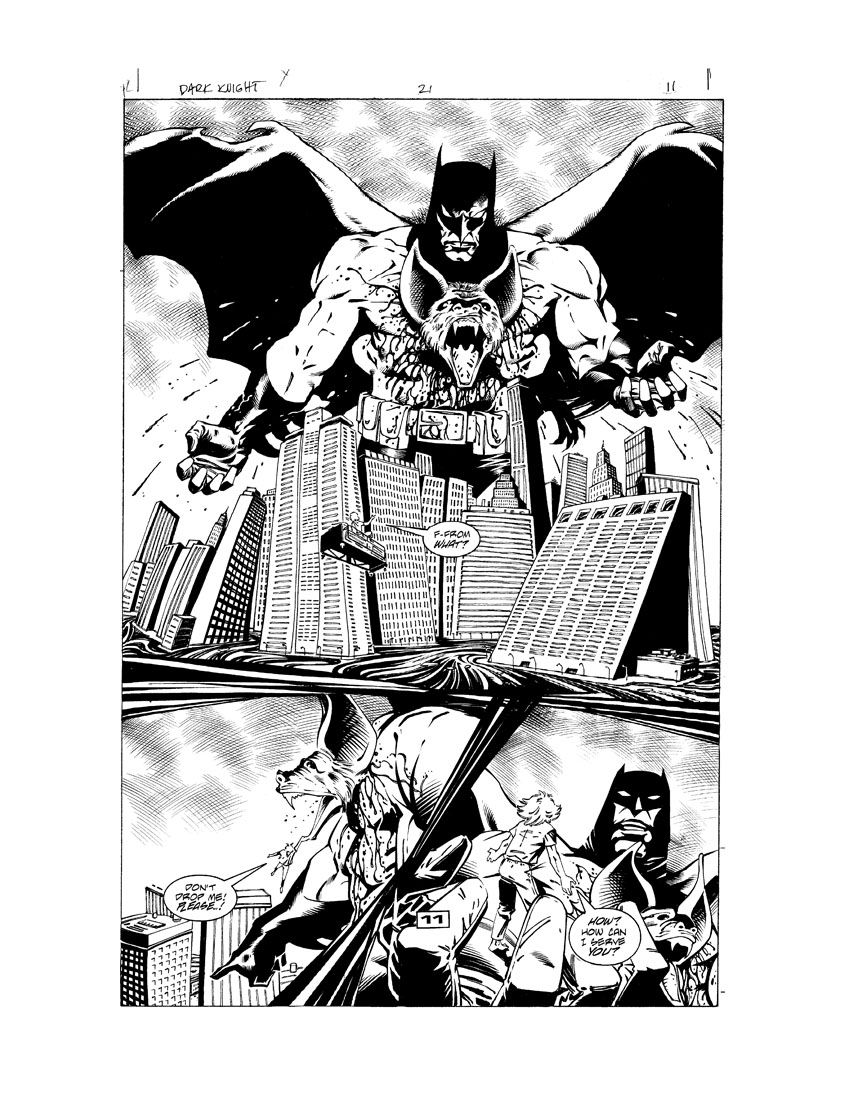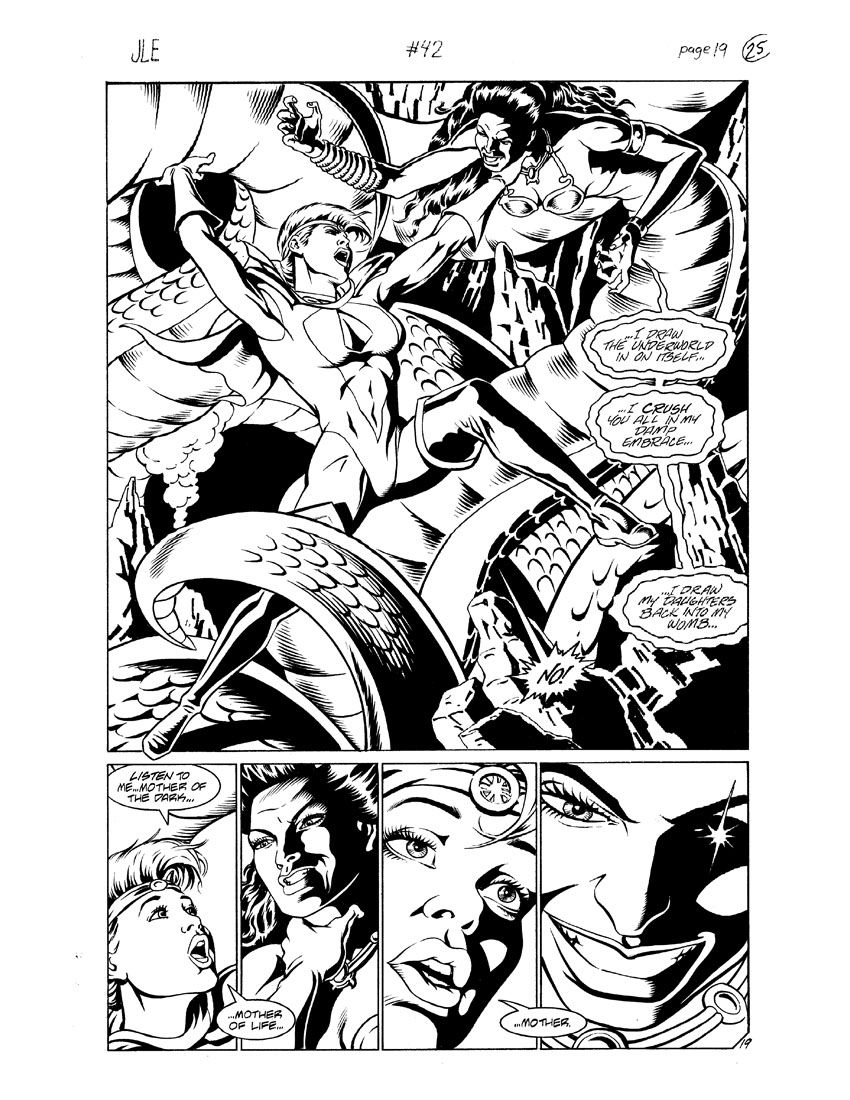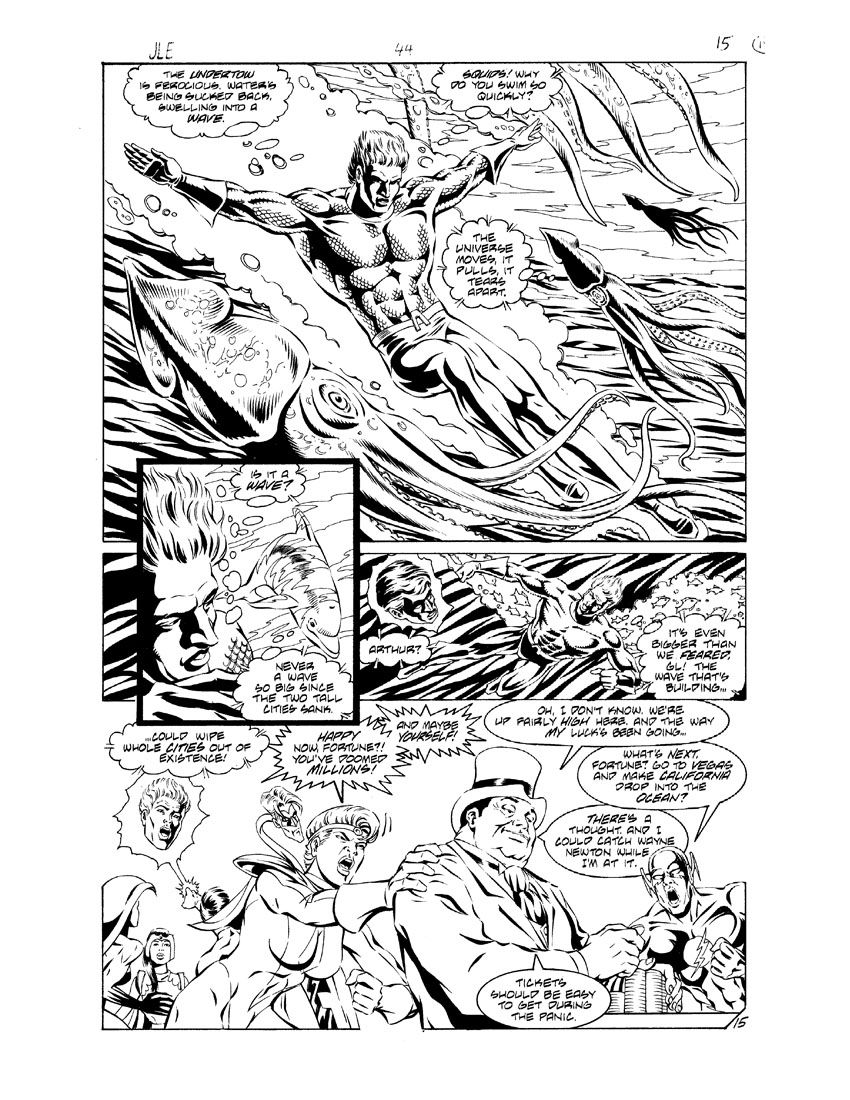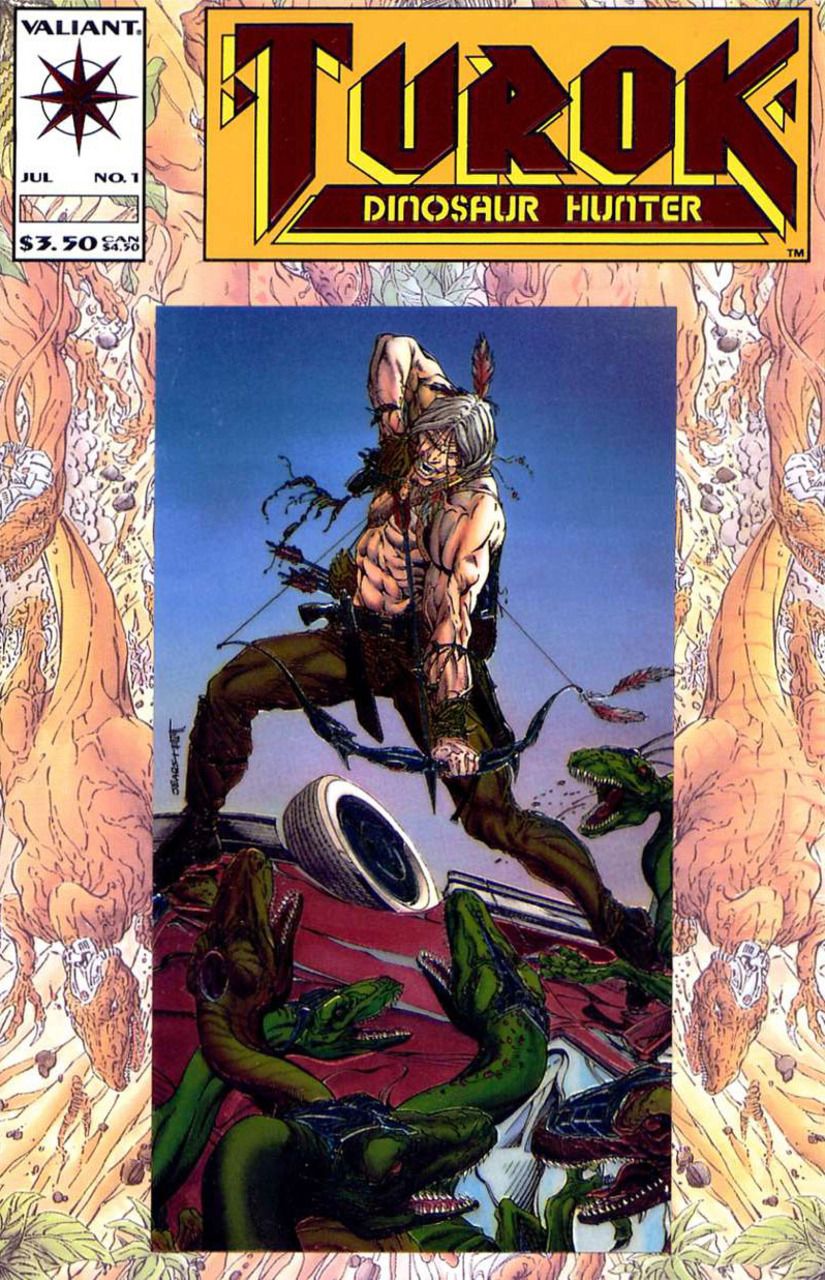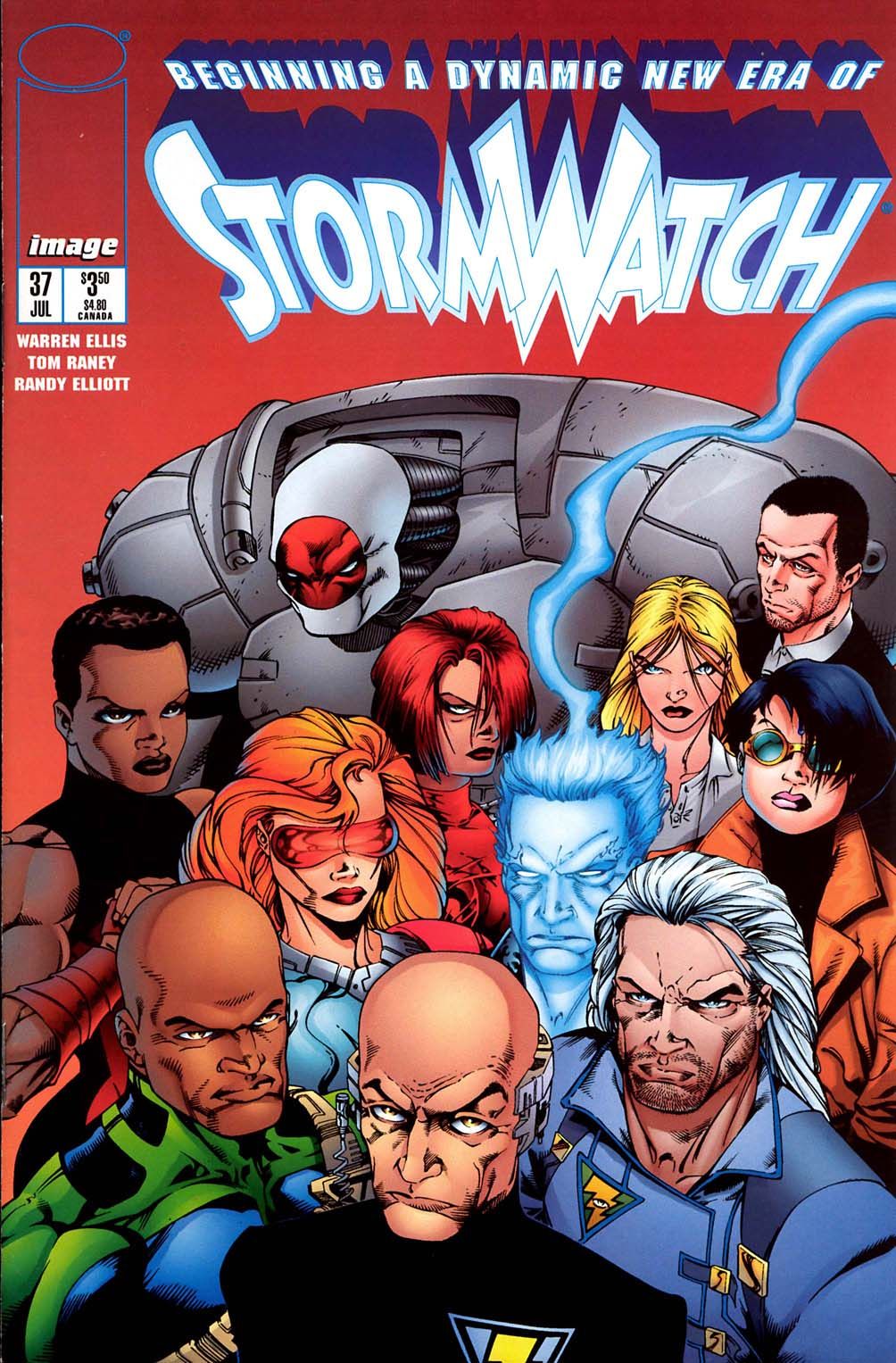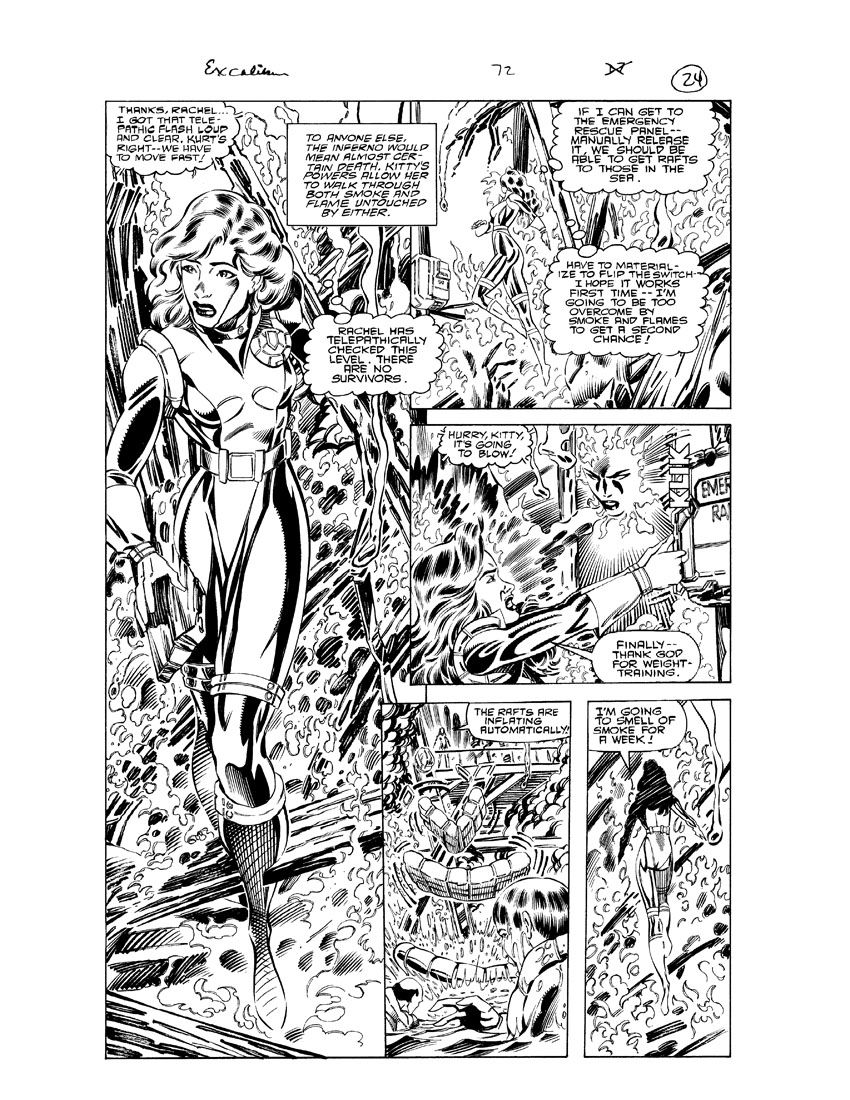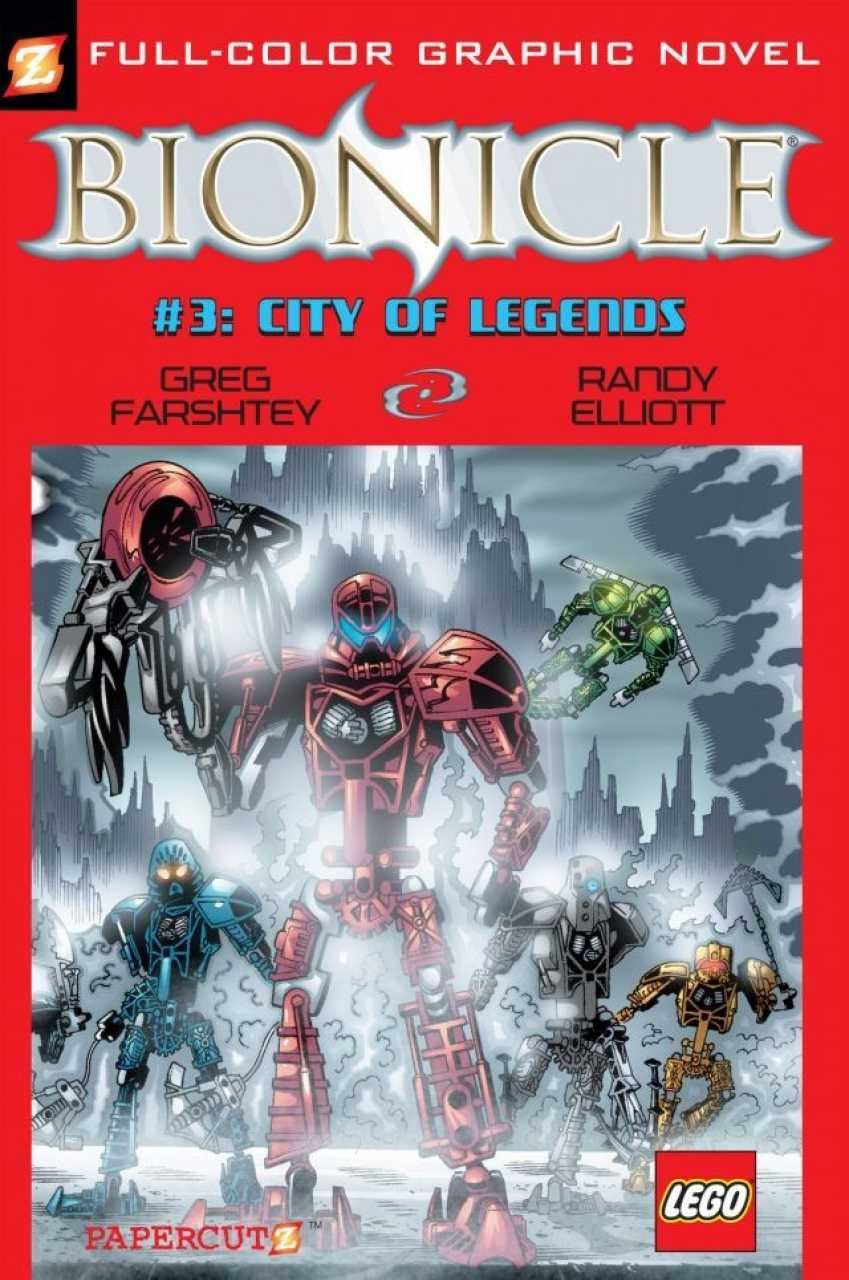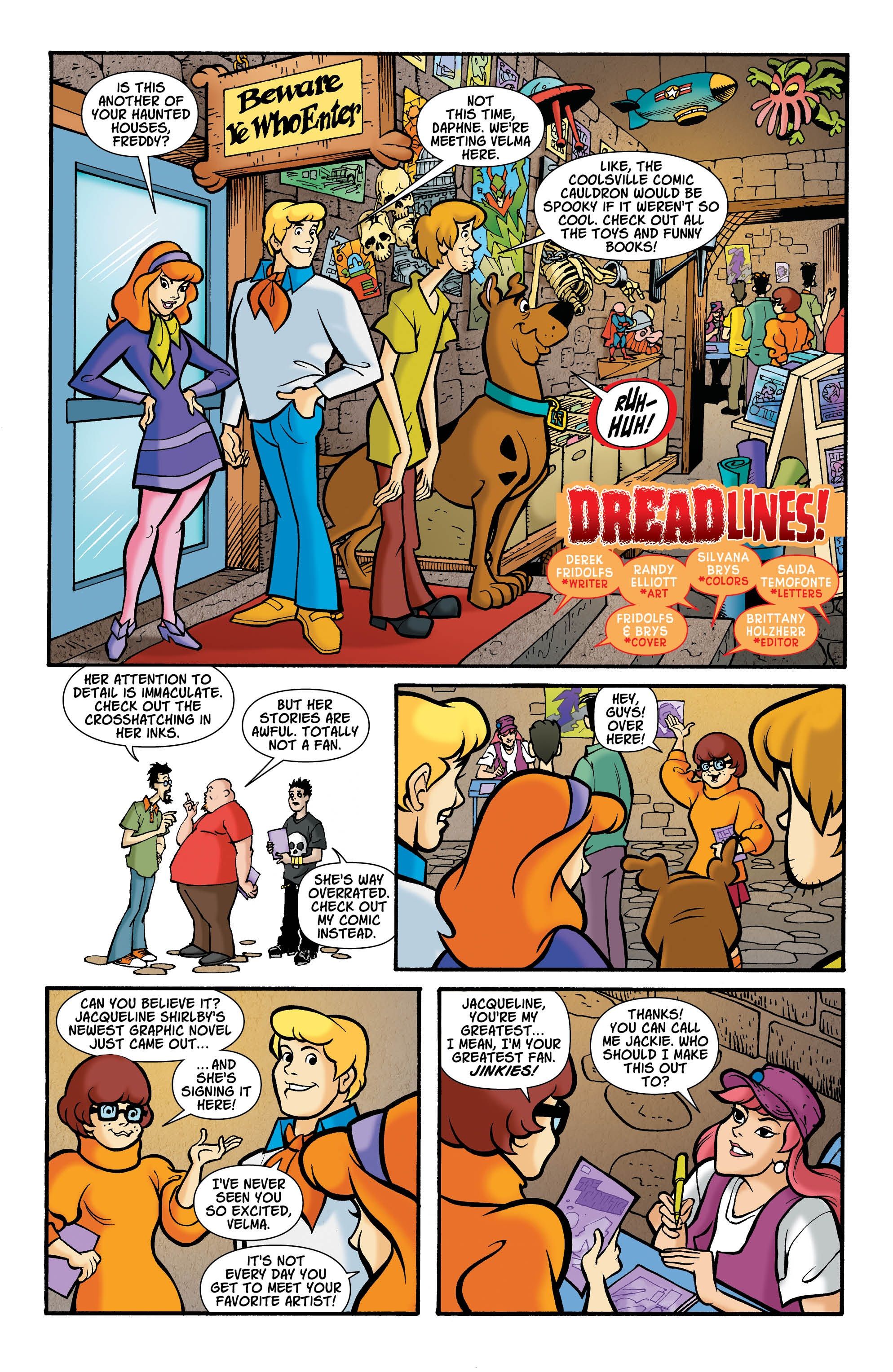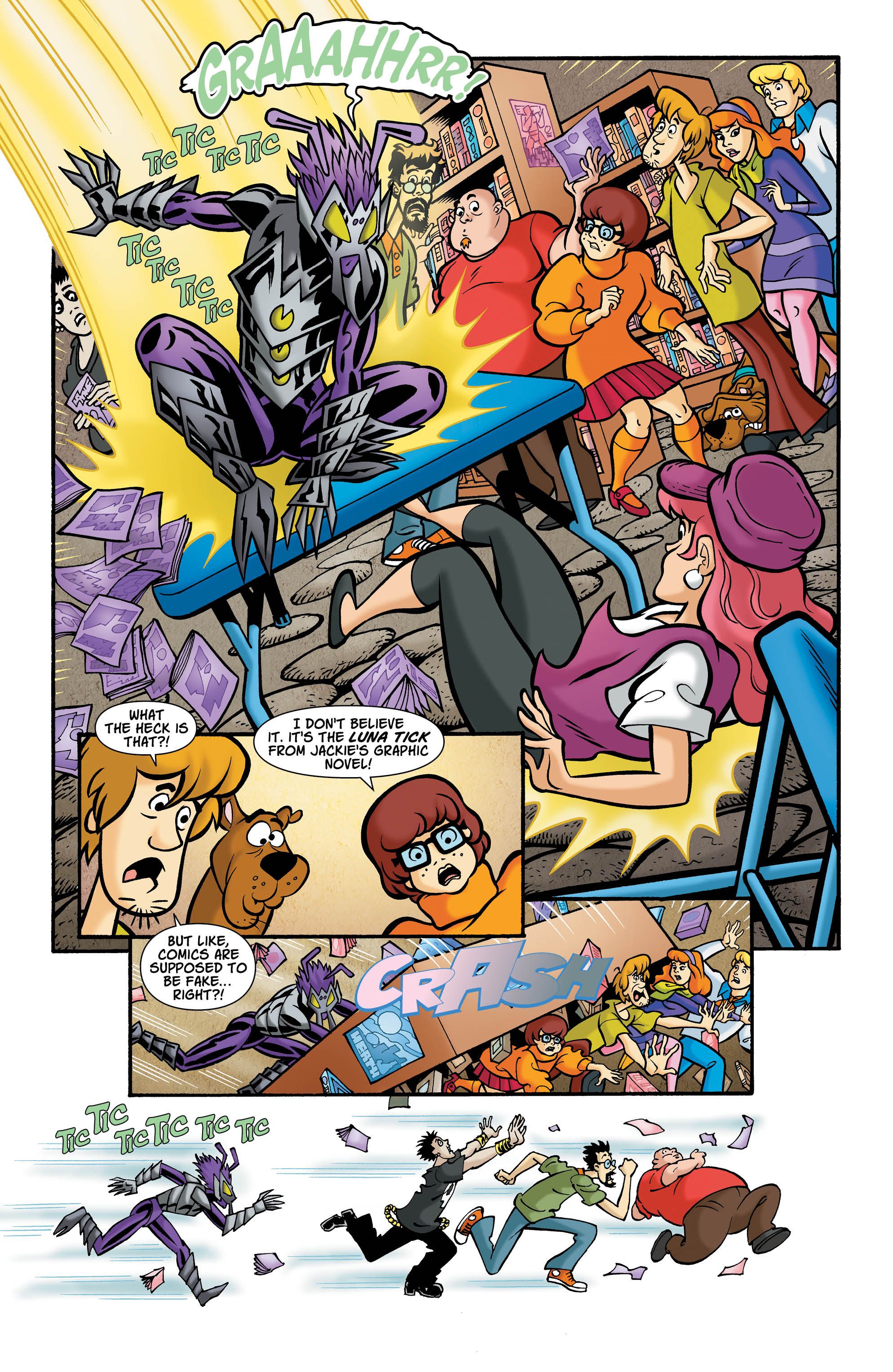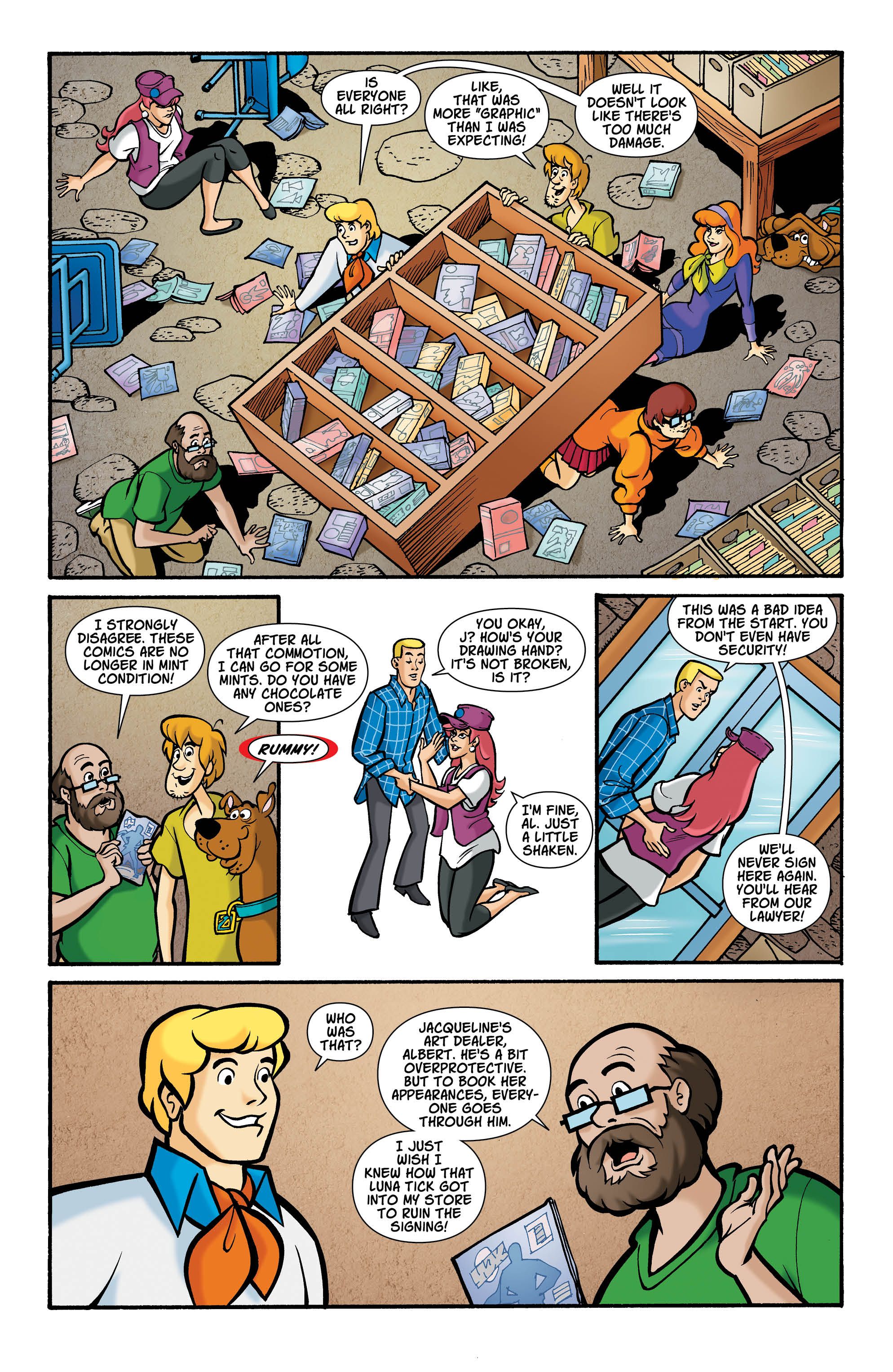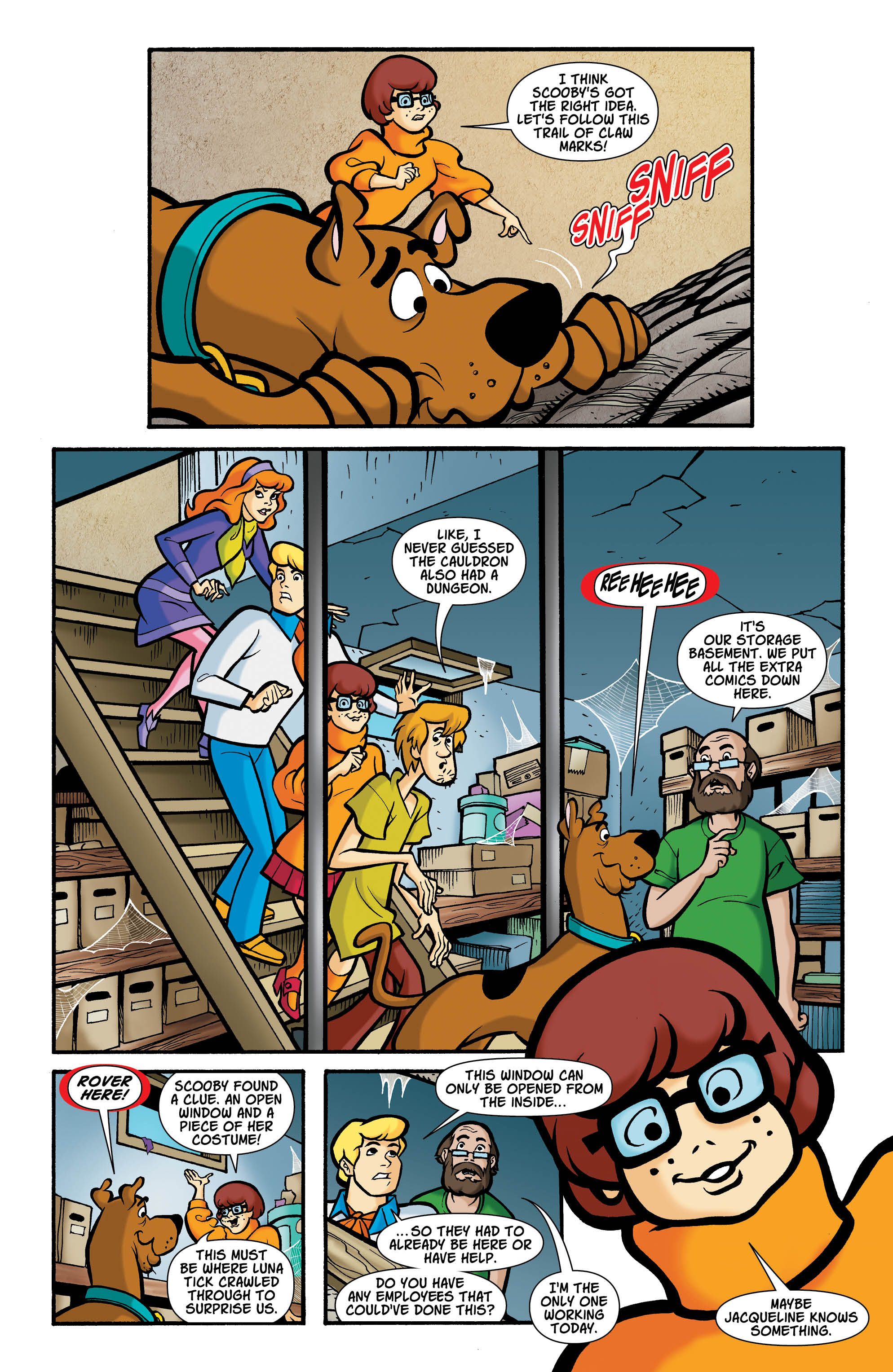One of the most fascinating aspects of the world of comic books is the relationship that exists between a penciler and an inker. The penciler needs the inker to complete his/her work, and quite often the two artists will form a regular team. The history of comics is filled with notable penciler/inker teams, like Ross Andru and Mike Esposito, Jack Kirby and Joe Sinnott, Frank Miller and Klaus Janson and John Byrne and Terry Austin. However, any fans of those artists will also note that in the case of all eight artists in question (with perhaps the exception of Andru and Esposito), they all did far more work with other artists than they did together. So what goes into a successful penciler/inker team? And how do you maintain such an arrangement?
A while back, I was re-reading a number of "Justice League Europe" issues for an article and I noticed that Randy Elliott was Bart Sears' inker for the last year that Sears was on the book, but when Sears left the series, Elliott remained on the book and inked the new regular artist, Ron Randall. Elliott, though, would then go on to do a number of later projects with Sears. So I thought it would be interesting to hear from a long time professional like Randy how an inker like himself made those various decisions. We discussed his career both in comics and his time as, in his words, a "former cartoonist," but then a funny thing happened during it all - Randy actually returned to comics after we began talking! He penciled and inked the lead story in "Scooby‑Doo, Where Are You?" #73 (written by a fellow inker, Derek Fridolfs), which came out today!
Enjoy our discussion of Randy's career!
CBR: How did you get started in comics?
Randy Elliot: As I recall, I started out back in'88 backgrounding for Ron Randall. I had been hired by Barbara Kesel at a con in Syracuse, NY. I wasn't even there! My friend, Bob Gray (a local comic shop owner), had showed her my stuff and she hired me based on those pieces! I was to ink the Dragonlance book that Ron was drawing. Unfortunately, she hadn't consulted with Ron about that. When he found out, the position went from inker to background inker. I was an untried talent, so I understood Ron's reluctance. I stayed as a backgrounder for around a year when an opportunity to ink a full issue came along. It was #15, if I recall correctly, and it was not penciled by Ron, but by Michael Collins. After that I started doing full inks.
Here were the two try-out pages I had to do for "Dragonlance"...
They were both inked on vellum. Inking on vellum used to be a bit more difficult. It's a high grade tracing paper. The surface was different and non-absorbent. It was tedious work, but given that it launched my career, it was time well spent!
If I recall corrrectly, I was also working for Dave Campiti at Innovation inking "Legends of the Stargrazers" over Matt Thomson's pencils.
The business was crazy at that time. Once you got started opportunities seemed to be everywhere. You'll recall that it was still the time before direct sales only, before Image. Newsstand books sold numbers that the publishers now wish they could generate. Word of mouth and who you knew had a lot to do with what projects you worked on. I'm sure its still the same today.
Ron and I had a lot of common artistic interests and we seemed to mesh nicely. We both loved the EC guys like Wallace Wood & Al Williamson. Ron's style echoed those creators' work nicely. Initially, I never had any interest in superhero books, but then I met Bart.
How did you meet Bart Sears?
I'm pretty sure that I was still working on "Dragonlance" when I met Bart for the first time. I was aware of him. We both lived and had grown up in the same city - Syracuse, NY. There was a local comic shop that we both frequented, Twilight Book & Game Emporium. The owner, Bob Gray (the same guy that had shown my work to Barbara
Kesel), had shown me some of the "Pied Piper" work that Bart had done for Dave Campiti and I was floored… That guy was GOOD!!! I think that it was around the time of Bart's big breakout with, "Invasion!", that we met at a store signing. We hit it off from the beginning. There was a mutual respect right from the start. To this day I consider him to be one of the GREAT talents of our generation and it was a privilege to work with him so much over the years.
Bart was trying to pencil and ink "Justice League Europe", but was running into deadline issues. First he had me ink one of his pages to try me out. I still have the first page of Bart's that I ever inked! Here it is...
Bart liked when he saw and he asked Andy Helfer, the editor of "Justice League Europe", if I could try out to be Bart's inker. Andy was fine with that, so I inked a couple of pages on vellum and the rest was history! Here are those pages...
I don't have a full record of my work before 1994. After that, I kept a daily log of what I did. Those early years were very hectic. There was a long stretch where I was inking at least two books a month between DC, Valiant, Marvel and Innovation.
I inked Bart on a "Legends of the Dark Knight" story arc where he wanted a completely different look to the inks on this job...
Once I began to do full inks, DC put me under contract. For several years I had what they used to refer to as "Continuity Contracts". These guaranteed you 12 issues a year and a performance bonus at the end of the year if you hit every deadline. As I recall, it was $100 a month, which was a pretty good incentive. I always got the bonus. It was great too, because I had health insurance! Always a bonus! It hurt when I had to buy my own after the market tanked and the contracts ceased.
How did you come to stay on "Justice League Europe" when Bart Sears left the book?
I can't recall if Ron requested me on "JLE" or if the editor just paired us together. I think it was Brian Augustyn. I may have just stayed on the title after Bart left. As I noted earlier, Ron and I had already developed a good working relationship on "Dragonlance". I do remember Ron and I chatting about how he wanted to change the look of the project. He was feeling pressure to look more "superhero-esque" with the project. This was more his desire rather than a dictate from the editor. I think that if you speak to any creators with extended careers you'll find that they consider "evolving" artistically. This might be from market pressures or they just get bored with what they've been doing for a long time.
Here are two great examples of Ron's take on "Justice League Europe" (from #42 and #44)...
Why did you leave DC for Valiant?
I'm pretty sure that I was lured away from DC to Valiant by Bart. He wanted me to ink "Turok".
I think that the plan was to have us paired on an on-going series. Valiant let Bart choose his inker. At that time, Bart was very popular and one of the perks of popularity was choosing his creative partner. Bart drew the hell out of the few issues that we did! Many of those pages took over a day-and-a-half or two days to ink! Back then, 10-12-14-hour days were standard for me.
After the second issue of "Turok", Bart ended up leaving Valiant. I'm not sure what the issues were. We never discussed them. I know that he did have the opportunity
to do a Spawn mini-series and he jumped at that. I don't recall why I wasn't asked to go along with him, but he and Mark Pennington worked on that series.
I stayed at Valiant and had the pleasure of inking Bernard Chang and then Rags Morales on Turok. I also did other stuff for them as needed. Both of those guys were fun to ink, for different reasons. Bernard was very stylized and bold. He was a dream to ink. I could knock his pages out very quickly. Rags on the other hand, was like Bart. He was very challenging to ink!
The guys that I inked at Valiant, after Bart, were assigned to me. I did whatever they wanted or needed.
How did you end up inking Tom Raney on "Stormwatch"?
I wish that I could recall how I got over to Wildstorm, but I can't. That's where Tom Raney and I got together. It was an editorial decision that paired us. A good
one from my perspective.
I really enjoyed working with Tom on "Stormwatch".
Moving from "Justice League Europe" to "Turok" with Bart Sears seems like an obvious enough move, but what about the "Excalibur" move that followed? Was that a move to work with Ken Lashley or was that a move to "Excalibur" in general without any specific penciler in mind just because an X-Book in need of an inker was too good of an opportunity not to go for it, as a sort of "get your foot in the door" type of thing?
I can't recall exactly how I got over onto Excalibur… I suspect that it may have been Bart that pointed me towards the contact with Suzanne Gaffney. I don't recall trying out, so she was probably familiar with my work over Bart. It was tough for me on Excalibur. I'm primarily a Brush Guy. Those books were looking for Pen Guys Somehow we made it work for the duration of my run. I did enjoy working on Ken's work. I never met him and we never spoke directly, that I can recall, so I have no
idea what he thought of my inks over him. His stuff was very energetic! Lots of fun.
Here's a Lashley "Excalibur" page...
I was definitely looking for that "foot in the door" at Marvel with "Excalibur", but as I said, I was mostly a Brush Guy and Marvel was definitely a place for Pen Guys. It's too bad. I don't recall how long I was on Excalibur, but after that project, I didn't get back to Marvel until Bart asked me to work with him on "Spider Woman" (and later, "Blade").
How difficult is it to decide which penciler to try to work with? Are you often faced with impossible "Who do I go with?" choices?
It really is a crap shoot. I was offered the opportunity to ink Joe Quesada by Jim Owsley, on my way out of DC. It was his first or second job at DC. I sure missed the bus on that one! I did okay with Bart, but had I partnered with Quesada instead...
Inking has been an endangered species for a long time. That's why I jumped at the opportunity to pencil & ink my own stuff on Bionicle. The writing was on the wall for me. I had to laugh.
How did the Bionicle work come about?
I can't recall exactly how I ended up working on Bionicle, but it had to do with Wildstorm. I'm pretty sure that Linda Lee was my entry into that job. They must have been looking for a replacement for Richard Bennett, the inker for issue #1. I was happy to step in. I really liked Carlos D'Anda's work. It was very clean and complete. The only problem that I had was that as the inker, I didn't get access to the toy reference that Carlos must have been given. There were a couple occasions when I wasn't quite sure of what I was inking, not being familiar with the toys themselves. It wasn't that I had trouble with Carlos' lines, but rather that the toys were very complex and elements were some times tough to figure out.
I inked Carlos up through issue #9 when Carlos wanted to move onto something more mainstream. Marty Pasko, the editor, was kind enough to allow me to try out for the penciling position. Both he and LEGO liked it, so I was able to do both pencils and inks from #10-#27. It was great! Unlike mainstream comics, this was a custom comic. Everything that I did had to be approved by LEGO, which could take a while on occasion. It usually took every bit of the two months that we had in-between issues to produce the book under those conditions.
From a drawing standpoint, the job was quite challenging. Once I assumed the pencil responsibilities, I began to receive the new toys directly from LEGO. Initially, I assembled the new ones, but I received one of them that took me most of a day to assemble, so I requested that in the future the toys be shipped assembled. That was really appreciated from my end!
The challenge of the job was how to faithfully capture the toys, so that the kids playing with them would know them and believe that they were reading about the same toys that they played with every day, but to do so in an exciting, visually dynamic fashion. I can remember that the first experiments were more like "toy drawings" rather than me animating or interpreting the figures. It took me a while to loosen up, but before too long, I was happy with the results!
I hadn't looked at that work for several years, but about two years ago, I pulled it out. I couldn't believe the amount of detail and drawing involved in the project! It seemed to me that it looked like I enjoyed the job... and I did! Over the years I've run into the kids that read those comics when they were released and across the board they always comment on how authentic my images of their toys were. It's great to get feedback like that from fans.
Like all good things, that job came to an end. LEGO had a new brand manager for the line and they wanted a different look for the comic. That was it for me and Bionicle.
You've worked with Bart Sears a number of times since you split following Sears leaving "Turok." How does that work? Is it Bart specifically requesting you or is it editors recalling your past work when it comes time to hiring an inker for him?
My work with Bart over the years has been at his instigation. Art teams are sometimes voluntary and some times dictated. When they work out well, like Bart and I, you get a finished project that transcends the talents of either artist individually. Its like a band. The totality of both talents are greater than either one individually. I have the greatest respect for Bart's work. I doubt that I'll ever do any ink work better than the work we did together on Turok.
I'm satisfied with all the work that I've done. It really was fun to ink different artists over the years. I always tried to enhance their work, not dominate it.
How did you get back into drawing comics?
I managed to get my samples in front of the right people, in this case, Brittany Holzherr, and she worked with me for a while to see if I could give them what they needed. I'm penciling & inking again! It's been really nice.
Here are a few sample pages from today's lead story in "Scooby‑Doo, Where Are You?" #73....
Do you have any advice for aspiring comic book artists?
I believe that most artists tend to have a shelf life - kind of like a bottle of milk! Young artists need to prepare for that eventuality. I teach at Onondaga Community College and I stress that to my students. You need to prepare for the end of your career, not just the start. In all likelihood your opportunities to create comics for the mass market will evaporate before you do. What do you do after 20+ years of making comics as a "Work For Hire" artist? You spent all those years working on intellectual properties that you didn't create. If you last that long, you'll have watched most everyone that you worked for and with drop by the wayside.
Another question that you need to ask yourself before dedicating the best years of your life to the pursuit of a comics career, is can you support yourself and a family doing comics? I'm not talking about sharing an apartment with 4 other guys and living on Raman noodles, but owning a home, and a car, and being able to save
money for the future and take a vacation with your family once in a while. You're going to invest a lot of time and effort into "making it", but just what does that
mean professionally and personally?
I stop into the local comic shop every few weeks and stare at the wall of comics and I wonder how many of those artists will be able to enjoy making those comics and
supporting their families for twenty years?

